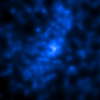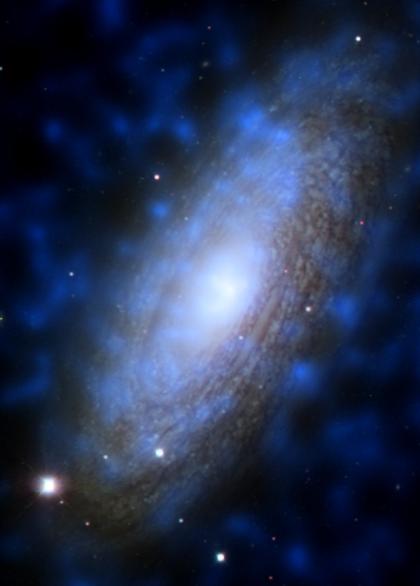Galactic Chimneys Turn Up the Heat
This X-ray/optical composite image of the large spiral galaxy NGC 2841 shows multimillion degree gas (blue/X-ray) rising above the disk of stars and cooler gas (gray/optical).
The rapid outflows of gas from giant stars, and supernova explosions in the disk of a galaxy create huge shells or bubbles of hot gas that expand rapidly and rise above the disk like plumes of smoke from a chimney. Chandra's image of NGC 2841 provides direct evidence for this process, which pumps energy into the thin gaseous halo that surrounds the galaxy. Galactic chimneys also spread hot, metal enriched gas away from the disk of the galaxy into the halo.
|
||||||||||||||||||||||||||
The X-ray and optical composite image of the galaxy NGC 2841 features a large spiral galaxy tilted to the upper right in the center of a dark sky. This central object is surrounded by a few smaller, bright sources of light. A large blue mottled gaseous-looking layer over the spiral shows multimillion degree gas detected in X-rays by Chandra rising above the disk of stars and cooler gas in the optical data. The rapid outflows of gas from giant stars, and supernova explosions in the disk of a galaxy create huge shells or bubbles of hot gas that expand rapidly and rise above the disk like plumes of smoke from a chimney. Chandra's image of NGC 2841 provides direct evidence for this process, which pumps energy into the thin gaseous halo that surrounds the galaxy. Galactic chimneys also spread hot, metal enriched gas away from the disk of the galaxy into the halo.





